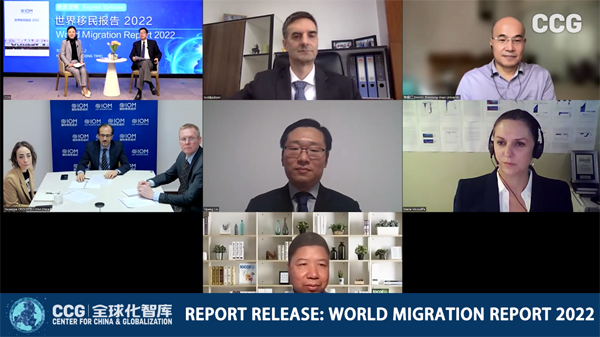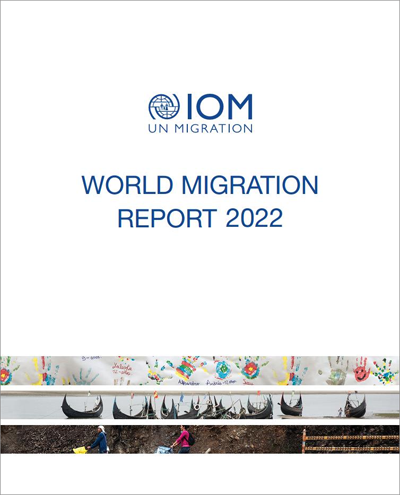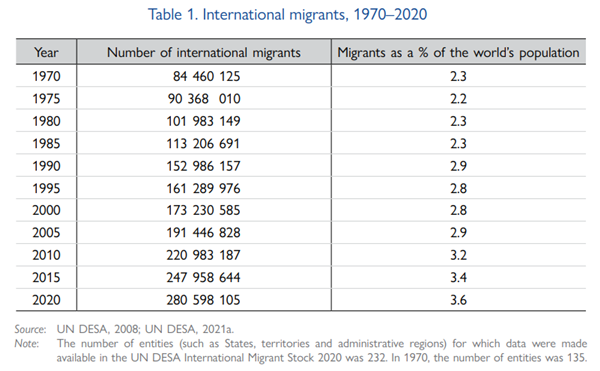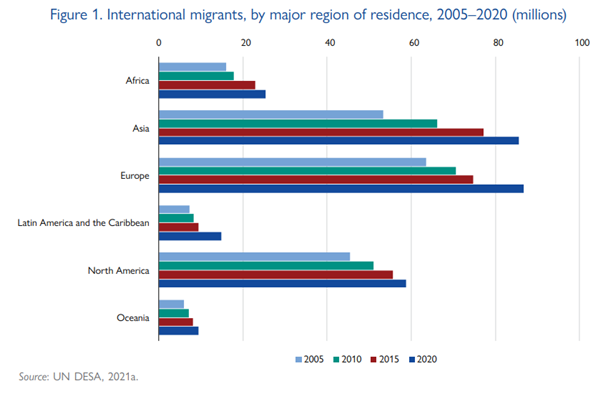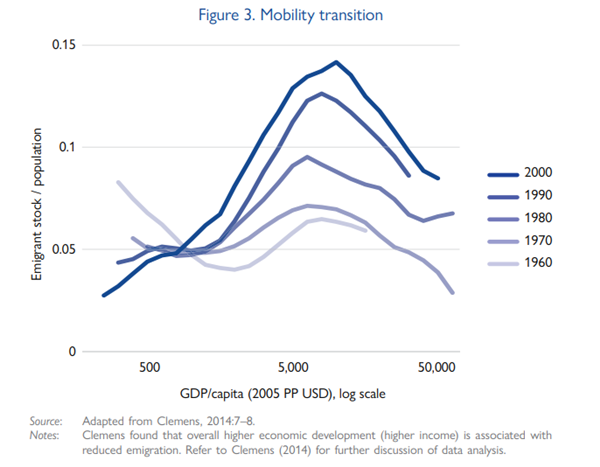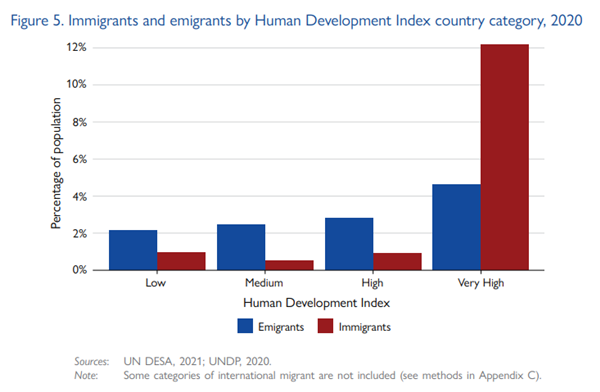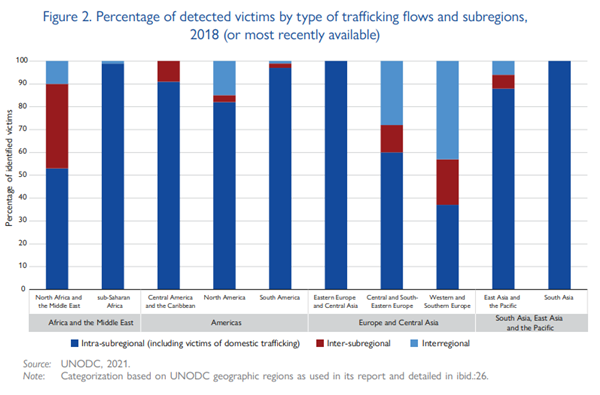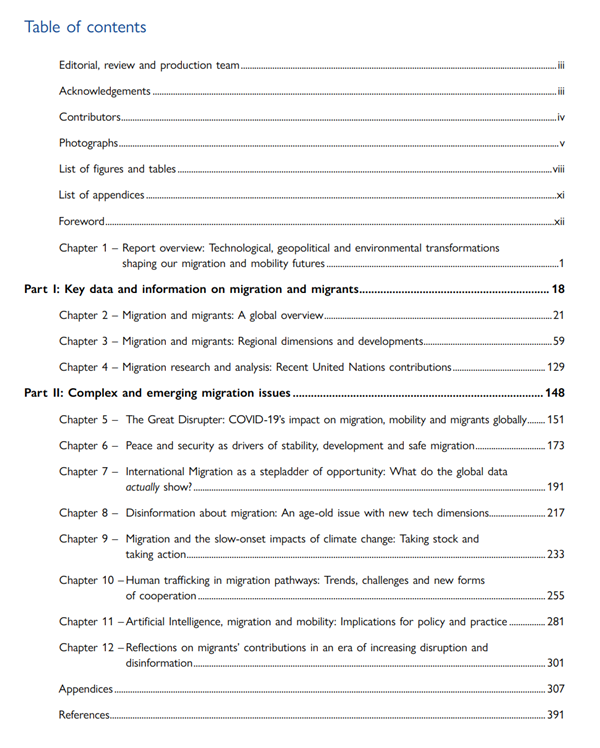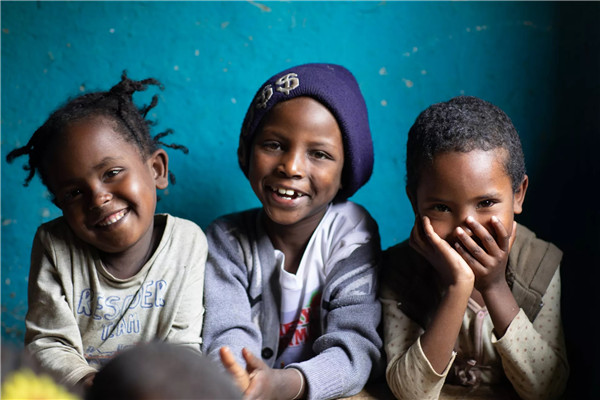WMR 2022 released, revealing new dynamic of global migration
Recently, CCG and IOM jointly held an even for the launch the World Migration Report 2022 (Chinese) and an online seminar on international migration. The World Migration Report is the flagship publication of the International Organization for Migration (IOM). Aimed at providing an authoritative account of migration trends and issues worldwide, this report helps deepened the understanding of migration by policy makers, researchers and the general public. The World Migration Report 2022 was translated by CCG’s research team. This is the fifth time CCG and IOM have cooperated to translate and release a Chinese version of the world’s most influential annual report on international migration.
Participants included Wang Huiyao, President of CCG, Guiseppe Crocetti, IOM’s representative in China, Marie Mcauliffe, Head of Migration Research Division and Editor of the World Migration Report, Stephen Jarislowsky, Chair in Economic and Cultural Transformation, Memorial University, Tony Fang, Guest Professor, School of Economics and Management,Sichuan Normal University, Todd Jackson, U.S. Policy and Business Director for The Yingzhong Consulting Group, Mike Liu, Vice President,China Global Talent Society, Yipeng Liu, Founding Dean, Yellow River College of Business; Professor and Director of Center for China Management and Global Business, University of Reading;non-resident senior fellow of CCG and Zhenjiang Zhang, Professor & Dean, School of International Studies/Academy of Overseas Chinese Studies, Jinan University, Guangzhou, China. The seminar was moderated by Qu Mei, Associate Research Fellow of CCG.
The report focuses on the development of immigration in the past two years. By primary exploration of the current data and other evidence, it answers the question of “how the pandemic changes the mobility and flow of population around the world”. The report also pays attention to the important themes, including the association between peace and migration, disinformation of migration, crackdown on human trafficking and the impact of climate change.
The report is divided into two parts. The first part introduces major data and information related to migration and migrants, including the overview of global migration, dimensions and development of regional migration and UN’s contribution on migration. The second part is about the complex and emerging migration issues around the world. It discusses the impact of the pandemic on global migration, mobility and migrants; drivers of stability, development and safe migration; whether international migration is a “stepladder of opportunity”; disinformation on migration; slow-onset impact of migration and climate change; human trafficking in migration pathways; the implication of AI for migration policy and practice, etc.
The following are selected key points from the report:
International migration continues to increase, with the United States and India becoming the prime destination and source countries.
The statistic data show that in 2020, the number of international migrants in the globe reached 281 million, with a 3.5 percent growth rate compared the 272 million in 2019. Due to the pandemic, this number did not reach 283 million as expected, but has maintained an increasing trend overall.
From the perspective of gender, 51.9 percent of the international migration of the globe are males, while 48 percent are females. The figures are 146 and 135 million respectively. The ratio of male to female international migration has been increasing since 2000.
From the perspective of source and destination countries in international migration, India was the largest source of migrants, with nearly 18 million nationals living abroad. Mexico ranked second. The prime destination for migration remained the United States, which has more than 51 million international migrants.
In terms of the regional distribution of international migration, according to an analysis of international migration populations based on regions as defined by the UN, Europe was the foremost destination region in international migration with 87 million immigrants (30.9 percent of international immigrants). Asia placed second with 86 million immigrants or30.5 percent of international immigrants. North America hosted 59 million immigrants or 20.9 percent of international immigrants followed byAfrica, which has 25 million immigrants, making up 9 percent of international immigrants. In the past 15 years, international immigrants in Latin America and Caribbean Area has more than doubled, increasing from about 7 million to 15 million, accounting for 5.3 percent of international immigrants, making it the highest growing region in terms of international immigrants. About 9 million international immigrants live in Oceania, accounting for 3.3%.
The report shows that international migrants from Oceania occupy the biggest proportion of the total population, with 22 percent of its population born abroad. The proportion of international migrants from North America, 15.9 percent, placed it second. This was followed by Europe with 11.6 percent living abroad. Numbers for Latin America and the Caribbean were 2.3, 1.9 and 1.8 percent respectively.
Negative impact of pandemic restrictions on global population migration, mobility and migrants
During the first year of the pandemic, in addition to ongoing domestic travel restrictions, countries, regions and locals implemented more than 108,000 international restrictions related to the pandemic, stuck a hard blow in global tourims industries. In 2020, international tourism lost about 2 trillion dollars, accounting for 2 percent of global GDP. The UN estimated that by mid-2020, the pandemic had reduced the growth of international migration by about 2 million, making the growth 27 percent lower than expected. As for population flow, 1,080 international travel restrictions related to the pandemic were implemented worldwide. Compared with 2019 (4.5 billion passengers), the passengers of 2020 (1.8 billion) dropped by 60 percent.
The report points out that the pandemic hugely altered the status quo and its negative impact on migration covers the whole period of international migration: from departure from source countries, entry into transit and destination countries, staying in transit and destination countries and returning to source countries. The pandemic brought mobility to a halt, strengthening certain types of flows or forcing them into informal channels.
Frequent conflicts and natural disasters increased homeless, asylum-seeking and unsafe migrants
A great deal of research and other evidence reveals how wars, conflicts and violence have threatened people’s lives and forced them to leave their homeland. In 2020 alone, millions of people from nearly 60 countries and regions were became homeless in their own countries due to conflicts and violence, most of which were from low-and middle-income countries (LMICs).
The report shows that peace and vulnerability are associated with development and homelessness. High-ranking countries on GPI usually have a good performance on HDI, which is a comprehensive index to measure a country’s performance on multiple dimension, including health, education and well-being. Although there are some exceptions, such as countries like Sierra Leone, Bhutan and Botswana, which ranking highly in terms of GPI, but show low human development. But the overall tendency appears to show that high-level human development and degree of peace is positively related.
The report points out that community stability is central to peace. It is increasingly seen as key to lifting communities out of crisis and achieving long-lasting solutions, Through community stability, institutions like the International Organization for Migration aim to help governments, countries and communities experiencing major socioeconomic and political transformations during and after crises, in a bid to maintain stability and security, prevent further forced migration, restore trust among community members and lay the foundation for long-lasting solutions, peace and sustainable development for vulnerable groups and local authorities.
“Polarization” in international migration as immigration increasingly related to highly developed countries
Analysis of the relationship between income and international migration shows that emigration increases along with income, but after the growth of income reaches a certain value, it stabilize or suppress emigration. In other words, as domestic GDP increases, emigration will first increase and then decrease. Some analysts call this phenomenon “mobility transition”.
The analysis of the scale of international migration and the data of human development index shows that, from 1995 to 2020, migrants from mid- and low-income countries increased, but not by a large amount, which again proves the current analysis of macro-economics. It shows that international migrants from low-income countries remain limited. However, in contrast to previous understandings of international migrants, the report proves the existence of “polarization” and migration is increasingly associated with highly developed countries. The crucial question is that although the potential migrants from developing countries around the world have the intention of immigrating, they lack legal channels. In contrast to previous understandings of emigrants from high-income countries, which states that as income passes a threshold value, international migration rates will fall, the emigration rates of countries with high and extremely high human development indices have significantly increased. Thus, the world has witnessed “polarization” and migration has become increasingly associated with highly developed countries. Compared to their counterparts in poor countries, citizens in rich countries find it easier to enter the controlled system of migration.
Migration disinformation wreaks havoc, misleading the public and creating discrimination and xenophobia
For the issue of migration, the harm of disinformation is accompanied by fostering discriminatory, hostile and hate-filled remarks and xenophobia against migrants which supports the legitimacy of anti-migration policies. Meanwhile, disinformation and the absence of reliable information harms migrants and has a negative impact the decisions they make and awareness of their rights.
The report points out that the spread of disinformation about migration is closely connected with the politics in society and in the media. In many countries, political figures sometimes popularize the misinformation about migration and work through media that support their political objectives. Of course, there are news media that expose the mistreatment of migrants, but investigatory news reporting is facing pressure. Media lack resources and journalists don’t have enough time and money to ensure their reports are in-depth and portray the real situation of migrants. Some journalist also lack proper training. Some media are also controlled by political and financial interests, which has created a culture of self-censorship. Therefore, many media lack a context for reporting about migration, resulting in shallow, oversimplified and uninformed reports that can even have political prejudices. Even media in countries with a high degree of freedom, news coverage tends to reflect the government’s priorities and concerns.
This report suggests that better news reporting practices should be encouraged. Technology and information should be used for correction and exposure to minimize misunderstandings brought about by disinformation.
Climate change is challenging the current system of international migration
This report shows that slow-onset climate change, especially extremely high temperatures and drier conditions (i.e. extreme decreases in rainfall or severe drought), could have a greater effect on increasing migration than sudden disasters.
According to estimates in a groundbreaking report released by the World Bank, if urgent actions on climate at the global- and country-level are insufficient, 1.43 billion people mostly in Sub-Saharan Africa, South Asia and Latin America may migrate domestically due climate change by 2050. The impact of gradual climate change may result in decreases in productivity, water shortages and the rise of sea levels, forcing the poorest to migrate.
In addition, research by the United Nations Convention to Combat Desertification (UNCCD) from 2000 to 2015 shows that by 2059 the number of migrants from Africa due to desertification may increase by 22 million, and 12 million for South America, and 10 million for Asia. There are distinct differences between climate models, which makes these predictions uncertain.
Modeling on country-level migration also shows that by 2100 migrants from the United States and Bangladesh will increase with the rise of sea levels. Meanwhile, some researchers emphasize that temperature increases may lead to an increase in the number of people applying for asylum to the EU.
Migrant trafficking and the human right issues in migration increasingly serious
This report reveals a connection between human trafficking and migration flows, both of which usually flow to rich countries where higher demand and prices make exploitation more lucrative. As with migration flows, cross-border human trafficking flow begins in regions (subregions). According to reports from United Nations Office on Drugs and Crime, 12 percent of people were trafficked from the same subregion, 8 percent were in the same region and 15 percent were inter-regional.
Of the reasons for trafficking, forced labor ranks highest (83 percent of trafficking through official border control points and 64 percent of trafficking through unofficial border control points are forced labor), followed by trafficking for sexual exploitation (15 and 22 percent respectively) and other forms (2 and 13 percent).
This report points out that understanding about human trafficking in migration should be strengthened. Governments should adopt necessary protection measures based on the seriousness of trafficking in their area. Countries ensure effective and influential coordination in jointly tackling the human right challenge imposed by migration trafficking.
The role of AI in supporting the management of migration
AI brings a series of policy and practical advantages. For example, AI make processes more efficient by simplifying repetitive tasks focusing on large amounts of data. Depending on their design, development and application, AI systems can quickly track and check identity at border ports. They are also useful in spotting individuals that pose potential security threats. Practices include machine learning tools combined with algorithm data analysis and chatting robots that provide information and consulting service to migrants in destination countries and help them settle. There is also increased attention on the use of AI to predict causes of homelessness and populations that are at risk. There is evidence that this may help these groups to avoid these situations.
Such predictions can help authorities deal with massive population inflows more effectively. This will be helpful for the fulfillment of human right obligations. For example, states can adopt measures based on migration forecasts and be better prepared to receive migrants. However, these predictions can also be used in non-entrée policies, which are measures that prevent migrants and asylum seekers from entering a country’s territory. These measures include the 33rd item of Convention relating to the Status of Refugees and illegal repatriation practices banned by Human Right Pact. Therefore, while noting the risks that AI systems could bring to ensuring the rights of migrants, it is still important in terms of migration and flow.
